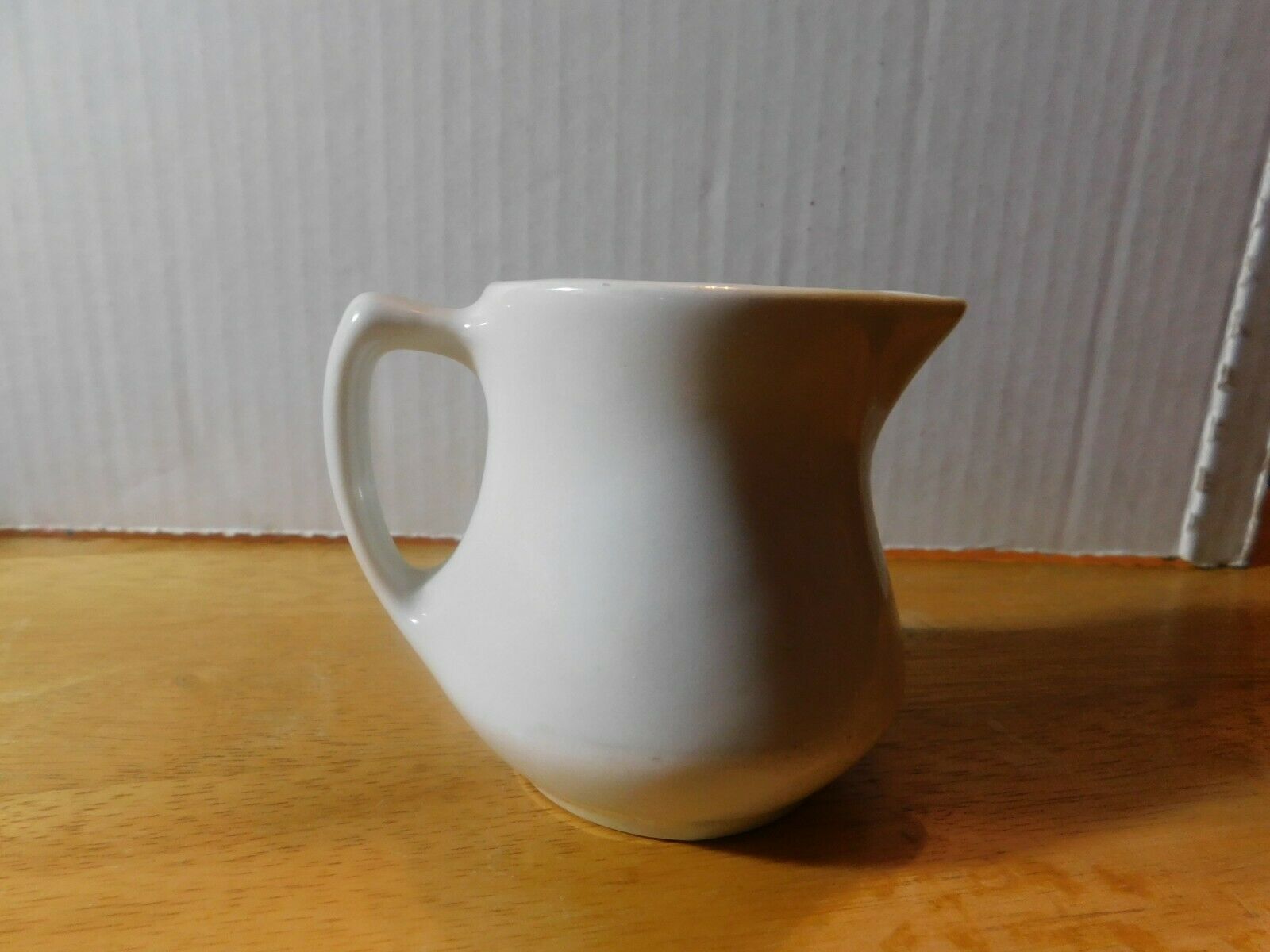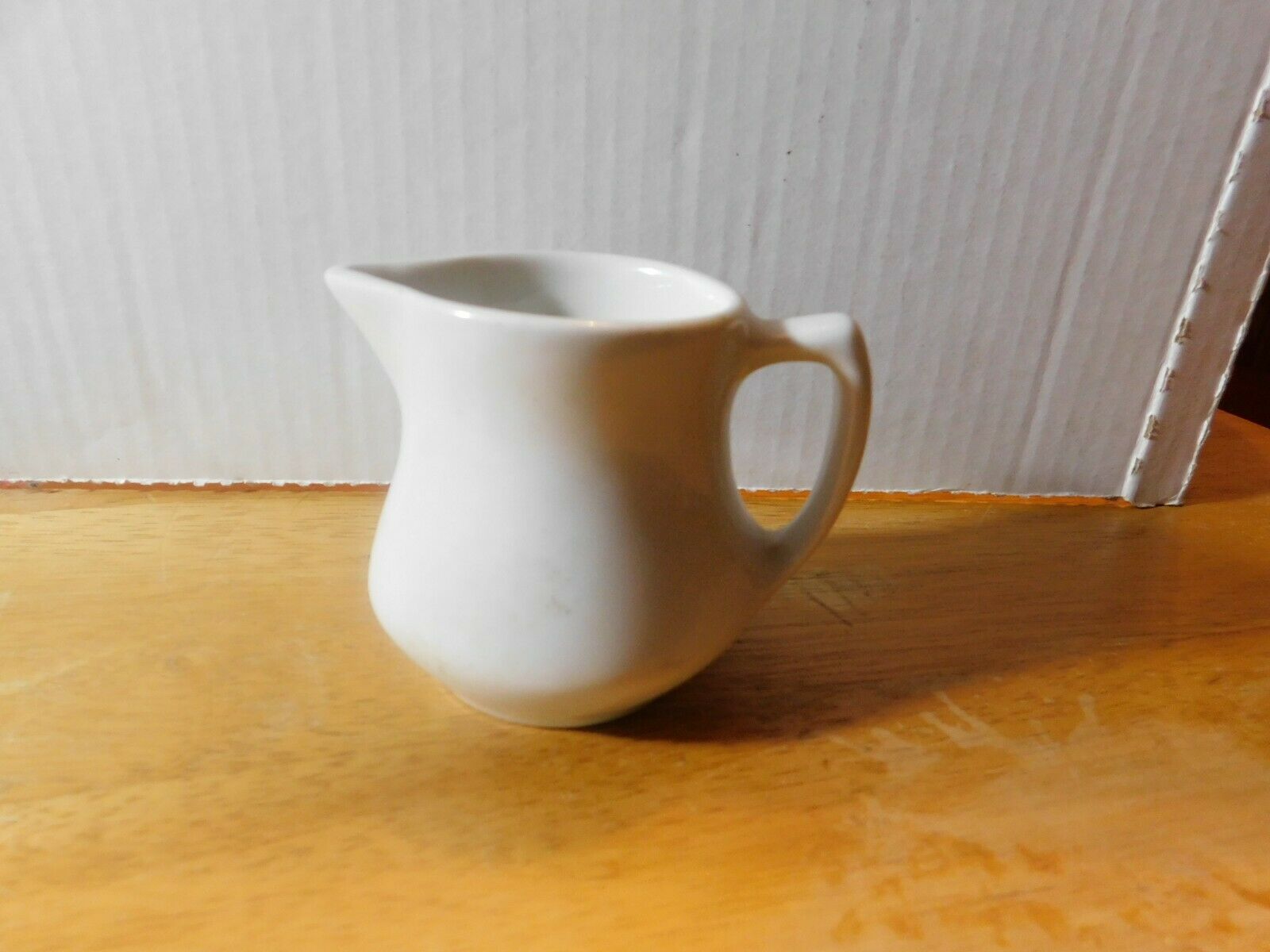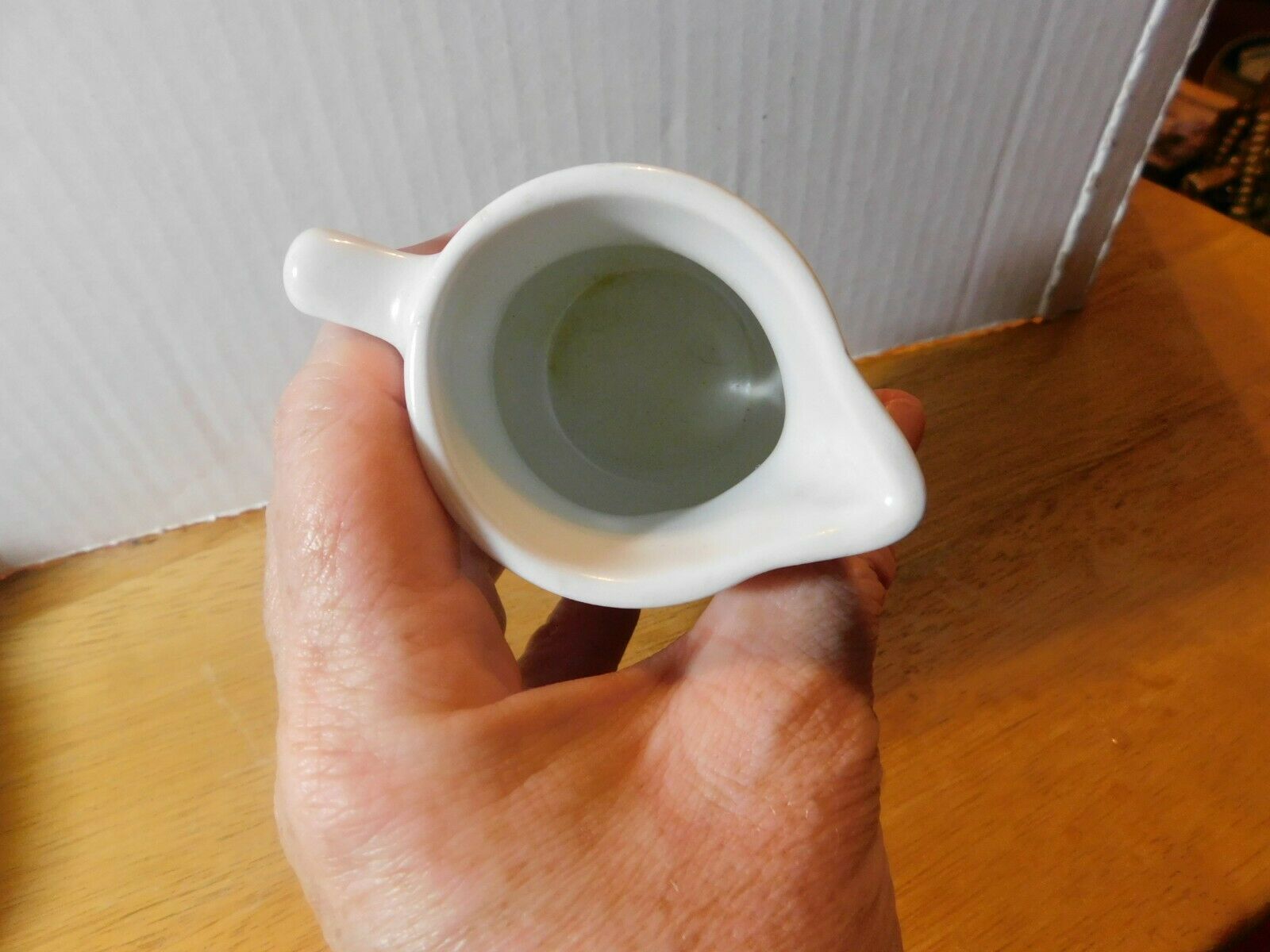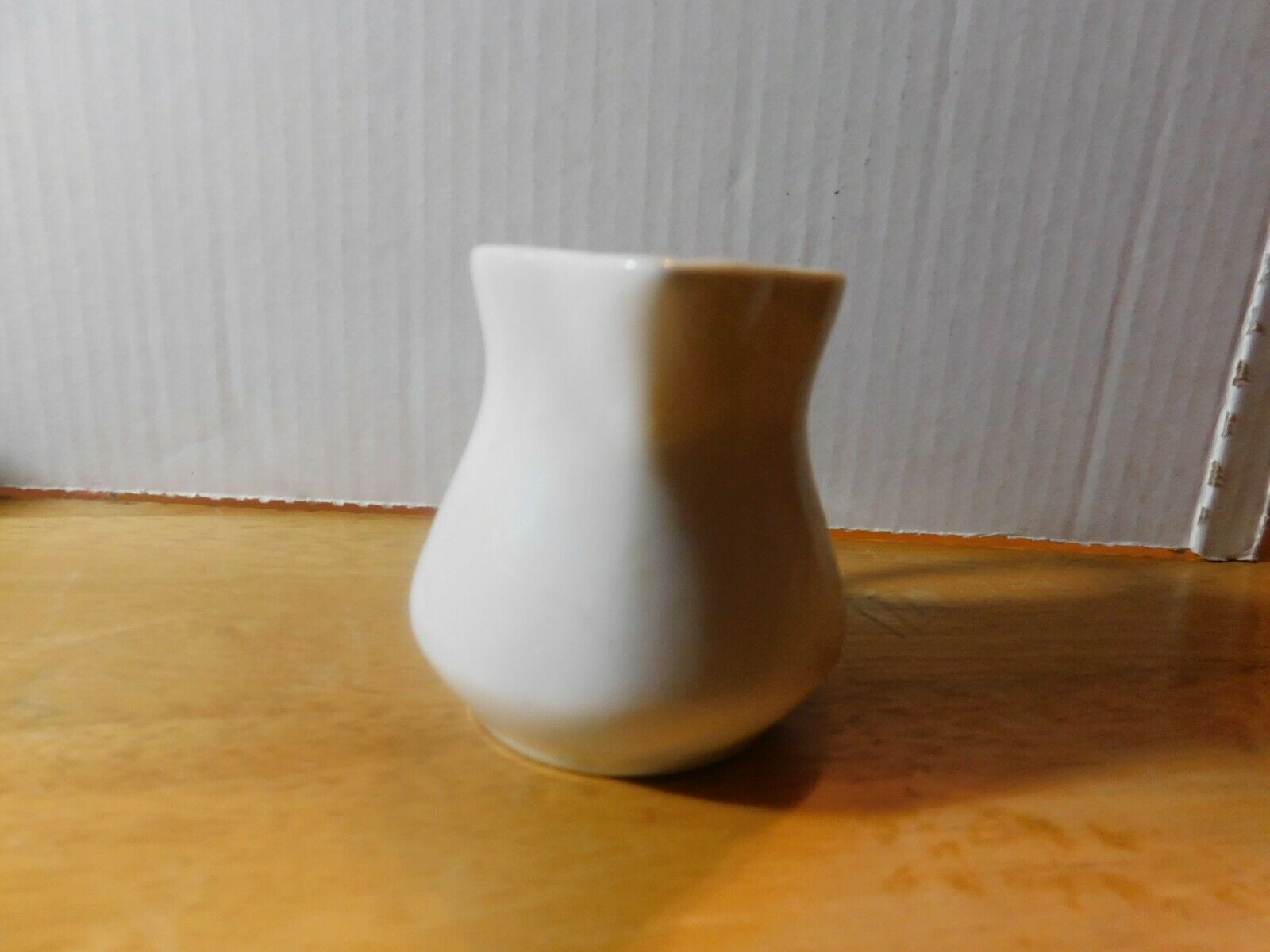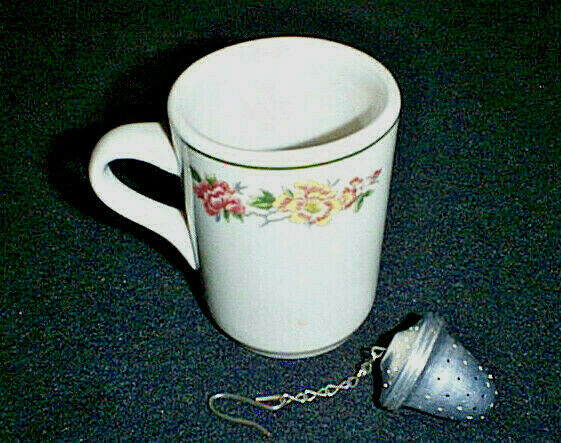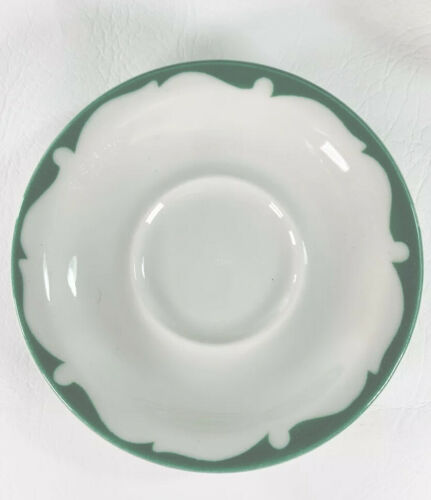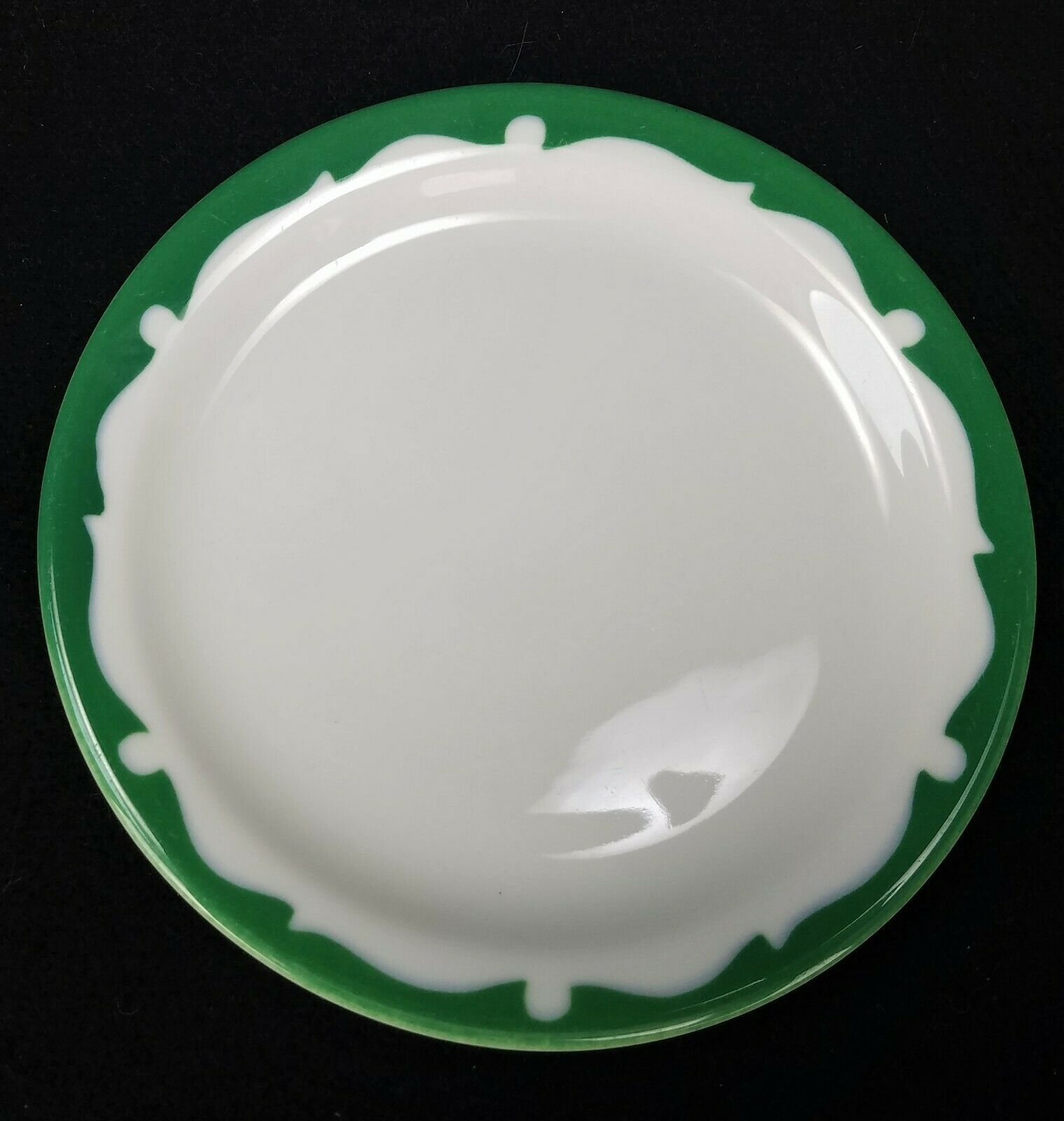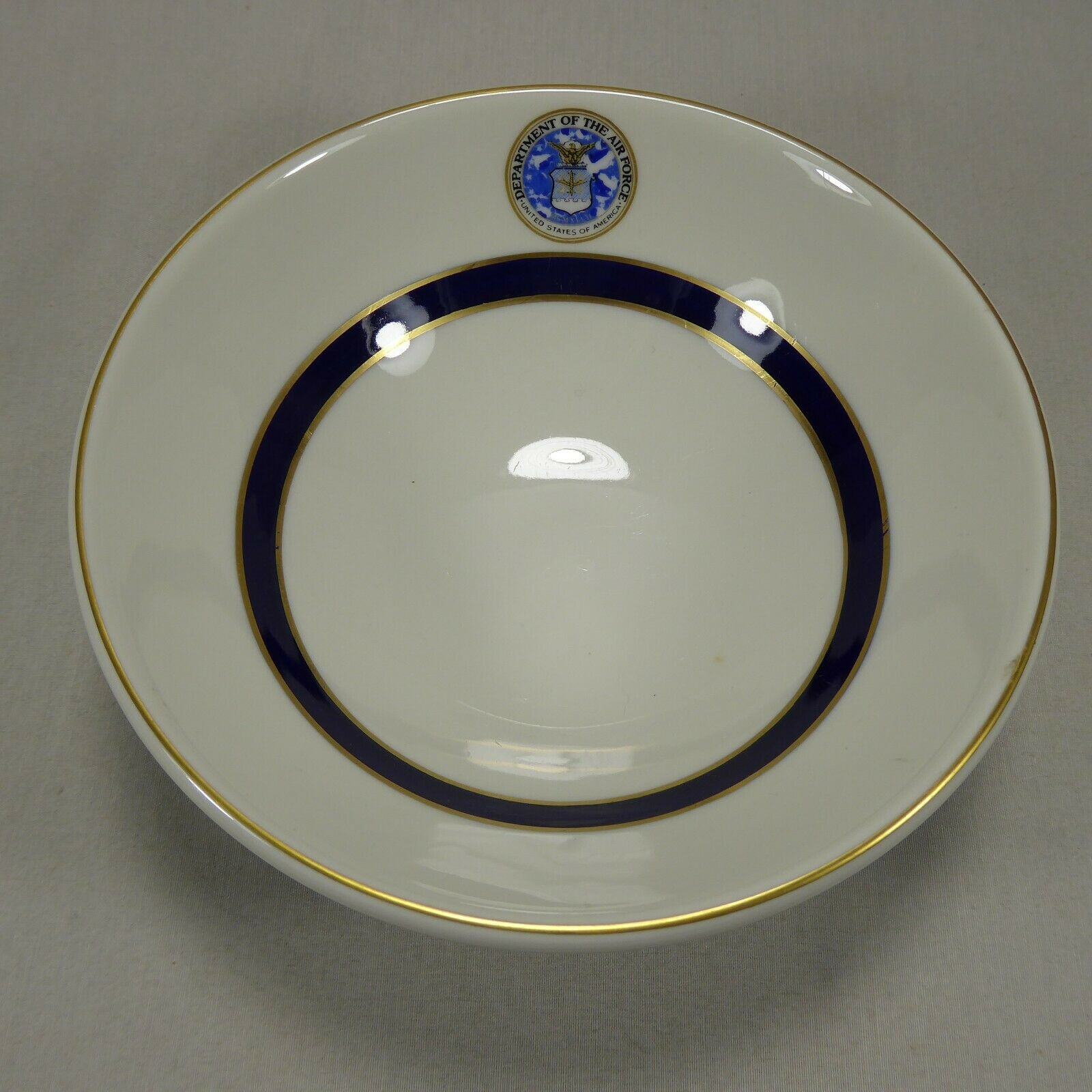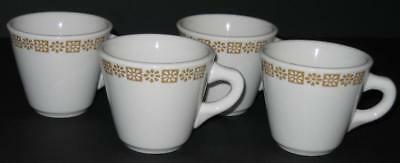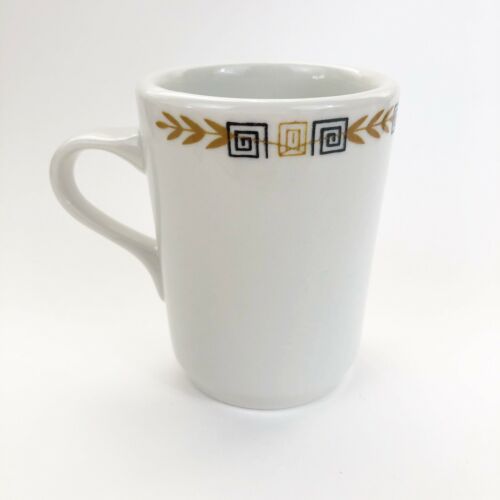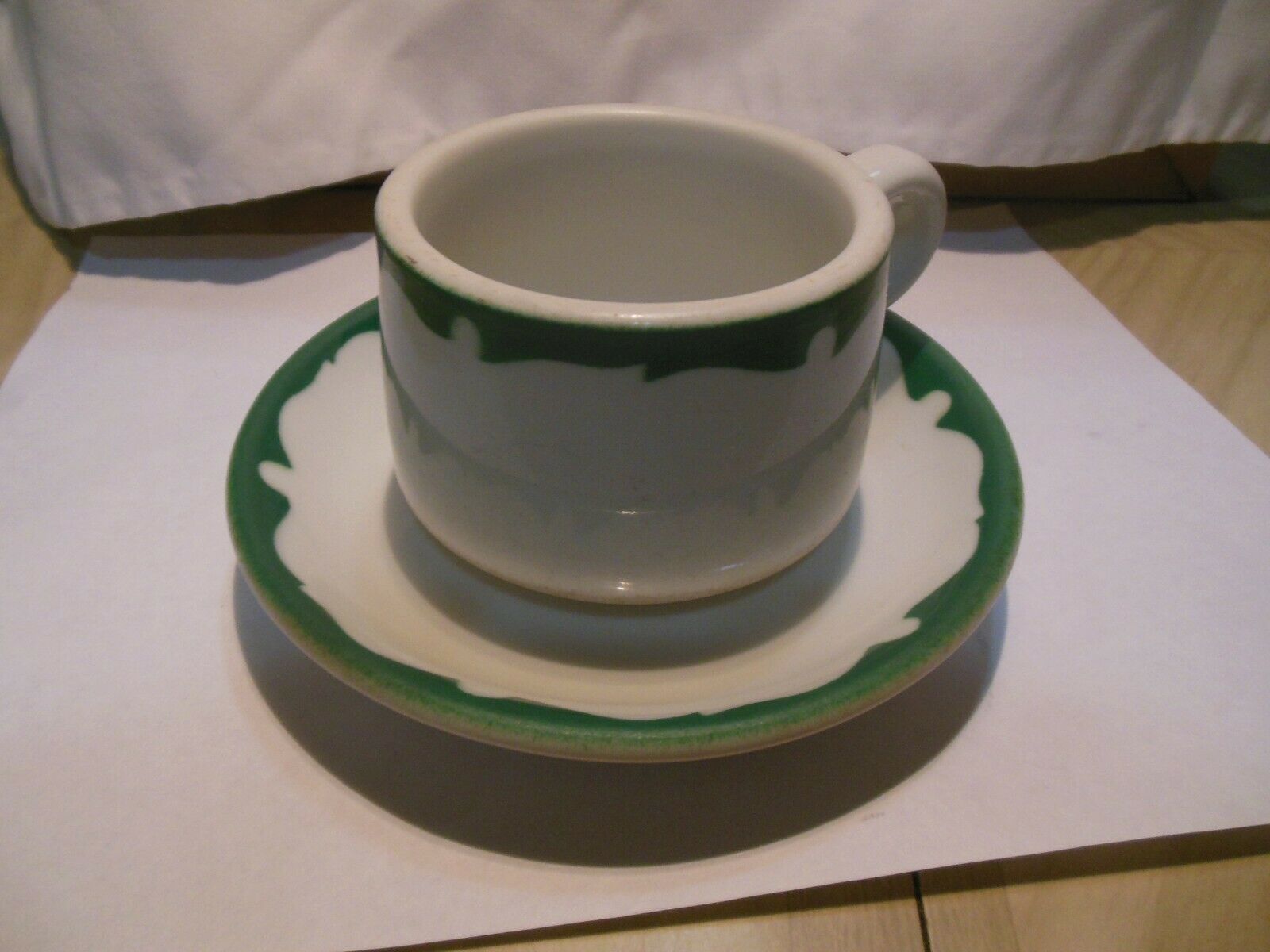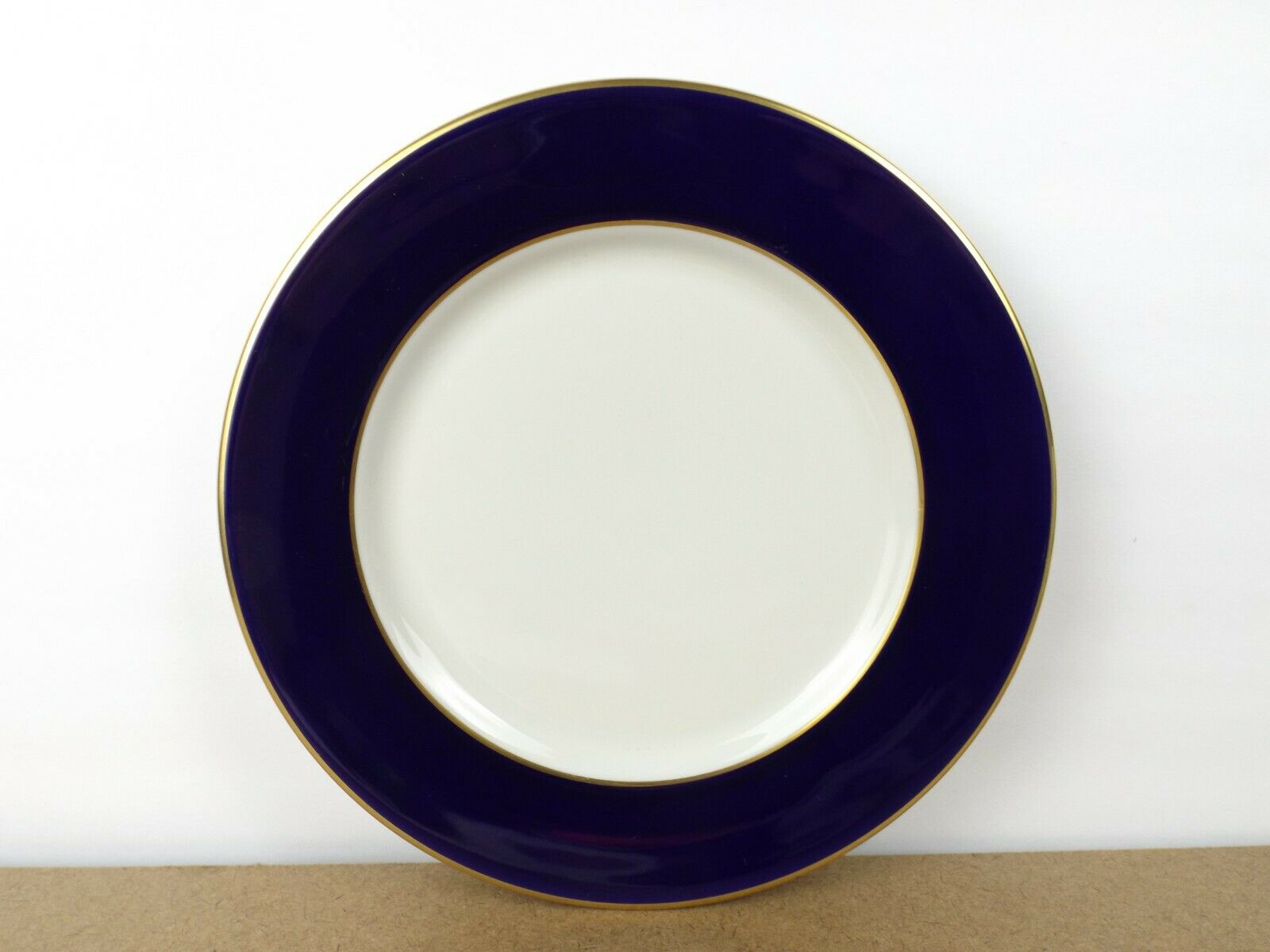-40%
TCKP~Dish~Interprise Restaurant Mini Milk/ Pitcher Creamer Made In China T-27
$ 1.58
- Description
- Size Guide
Description
Shenango China was one of the leading American dinnerware manufacturers from the 1920’s until the late 1980’s. The company, headquartered in New Castle, Pennsylvania, absorbed many of its competitors. Shenango dinnerware is easily identified using the back-stamp (corporate identification placed on the back or underneath part of the ceramic dish) featuring Native Americans involved in various forms of pottery production.Slow Beginnings:
Shenango opened in 1909 but struggled for financial stability for at least a decade. The company purchased nearby New Castle Pottery and then relocated to its plant and headquarters. The company purchased Wallace China in 1959 and Mayer China Company in 1964.
Commissioned Ware:
Shenango manufactured "American Haviland" for the French company Theodore Haviland from 1936 through 1958. A German company commissioned Shenango to make china to sell in the United States under the “Castleton China” brand. The Shenango China Company was organized in New Castle, Pennsylvania, in July 1901 with the intention of manufacturing commercial china for hotels and restaurants. Local attorney and businessman E. N. Baer served as President, while Edwin Norris was Vice President. About a month later the company acquired several properties along Sampson Street (at the end of Emery Street), located just north of the New Castle Pottery Company – a newly established competitor just about to commence operations.
The New Castle News of August 28, 1901, reported on the Shenango China Company with, “The site for the latest addition to the industries of New Castle has just been secured and embraces 12 acres of land that has been purchased from three different interests. Nine acres were secured from the Phillips property, two were bought from Jerry Mack and one was purchased from Mrs. Sankey… The company has applied for a charter and work will begin upon the plant as soon as the incorporation papers are secured. The capital stock is 0,000 and the names which appear in the application for the charter are J. P. H. Cunningham, Edwin P. Norris, L. S. Nickum and Andrew Fleckenstein.”
It was an exciting time for New Castle as it was experiencing the greatest growth in its history. The New Castle News of October 23, 1901, reported, “The Iocating here of the Hartman Manufacturing company and the building of the New Castle Pottery plant, the works of the Universal Sanitary Supply company, the construction of the Shenango China company’s plant and other works is bringing many new families here who will hereafter be identified with the city and its interests. When all these plants begin operations in full a yet larger increase in the population will be observed.”
Work on the Shenango China plant was soon underway and active operations began sometime in early 1902. Despite the enthusiastic start the early years of the company were nothing short of a major struggle. Business was slow and financial and technical difficulties saw the company run into serious trouble by early 1905. At about the same time the neighboring New Castle Pottery Company, faced with similar issues, closed down and filed for bankruptcy.
The New Castle News of January 18, 1905, reported, “An event which has created a decided sensation throughout New Castle and especially in business circles, Elmer I. Phillips, one of the stockholders of the Shenango China company, who, on Friday afternoon, filed a bill in equity in the office of the Prothonotary, declaring the company to be in an insolvent condition and asking for the appointment of a receiver. The prayer of the petition was granted by Judge William E. Porter, and E. N. Baer, president and attorney for the company, was appointed receiver, his bond being fixed at ,000. The liabilities are placed at 5,000, which is said to be ,000 less than the assets. One of the chief reasons for asking for a receiver at this time is the fact that Saturday is pay day, the petition containing a statement that there are not sufficient funds available to pay the employees, the payroll amounting to ,100.”
Various companies and creditors filed lawsuits seeking to reclaim payments owed by Shenango China. Baer began efforts to satisfy the creditors, while a new ownership group was being organized. The assets and properties were finally sold in September 1905 to a new syndicate, which included Elmer I. Phillips, E. E. McGill, Edwin Norris, William E. Wallace, and Andrew Fleckenstein. The struggling business would be reorganized as the Shenango Pottery Company.
The New Castle News of Wednesday, September 6, 1905, had this to say, “Operations were begun Monday morning at the plant of the Shenango China company by the local capitalists who obtained possession at the receiver’s sale last week. Edwin F. Norris, who represents the purchasers in the transaction, stated Monday that operations will be begun in full as soon as possible. The plant employed about 250 men when working full turn. The new owners will elect officers and re-organize the company as soon as the sale of the property is confirmed by the court, which formality will probably take place this week. The plant will then be on a much firmer financial basis than before and it is said will operate steadily.”
The new investors were cautious and reorganization efforts progressed slowly over the next few years. In the summer of 1908 the plant was partially reopened, with M. S. Marquis serving as President and Charles C. Robingson as Vice President. Experiments began on producing new types of china for hotels and restaurants. Finally, in late March 1909, the plant was fully reopened with 200 employees. Incredibly, just one week later, chaos reigned again.
The New Castle News of April 2, 1909, reported, “Those responsible for the starting of the pottery this week state that a number of those who should have assisted in setting the pottery on its feet again have failed to respond. Efforts to secure all the increased capital necessary to carry on the work successfully have failed, it is said, on account of the indifference of a number of stockholders. The pottery is deeply in debt, and just what means will be devised to put things in shape again cannot be determined.”
The company was shut down indefinitely and E. N. Baer was once again appointed as receiver. The affairs of the company were settled in June 1909 and a new group of investors, led by local businessman James M. Smith Sr., took over the struggling firm. Smith, a senior member of the Kirk & Smith Hardware firm (later known as the Kirk Hutton Company), was taking a major financial gamble. He was an industry novice, but wisely surrounded himself with skilled pottery experts. The next few years were a struggle as Smith, serving as President, attempted to get the business going.
During a public auction on July 16, 1912, attorney James Chambers, acting for an unknown party, purchased the six-acre property and assets of the defunct New Castle China Company for ,450. The stockholders of the New Castle Pottery Company had been trying to restart the business for several years, but the city finally seized the property due to unpaid taxes. The “unknown party” Chambers was working for turned out to be James M. Smith Sr. of the Shenango Pottery Company, who planned to upgrade and expand his business onto the adjacent property.
Within a few months workers commenced renovations at the former New Castle Pottery site, but the Great Flood of March 1913 swamped the plant before it could be opened. It was belatedly opened for business in May 1913. Smith continued to expand the pottery business, but he was bogged down by one setback after another. During this time Smith continued to erect larger and better kilns anticipating future success.
It was after the Great War (World War I) ended in late 1918 that the pottery business finally became a success. The company experienced phenomenal growth during the prosperous times of the Roaring Twenties. Smith added numerous kilns and other buildings and soon employed over 800 workers. In May 1929 it was announced that the plant of the Shenango Pottery Company would be doubled in size, while adding an additional 700 employees. The company even maintained itself during the tough times of the Great Depression, specializing in hotelware and dinnerware for homes.
In 1936 the Theodore Haviland Company, a famous fine china manufacturer based in Limoges, France, anticipated the coming war in Europe and relocated to the United States. The company reached an agreement allowing Shenango Pottery to manufacture its designs, of fine dinner and hotelware, for sale in the United States as “American Haviland.” The successful Haviland line of china was produced for over two decades until it was discontinued in 1958.
In late 1939 the Shenango Pottery Company reached a similar agreement to produce fine china for a German company known as Rosenthal China. As a result of this agreement the Castleton China Company was incorporated in May 1940, with executive offices and a showroom located in New York City. Shenango Pottery, which manufactured the china, owned 33% of the stock of the new firm. The majority of the stock was owned by Louis E. Hellman of Rosenthal China. Hellman served as the President of Castleton China, while George B. Zahniser was the Vice President.
The china bearing the Castleton name was of the finest quality in the entire world. It was soon found in the most luxurious hotels and restaurants around the world, including the Waldorf-Astoria in New York City. In the coming years Castleton China would be commissioned to manufacture dinnerware for the White House administrations of Dwight D. Eisenhower and Lyndon B. Johnson, as well as for Air Force One, the United Nations, the Pennsylvania Railroad, and U.S. embassies around the world. When U.S. Senator John F. “Jack” Kennedy visited New Castle in October 1960 he was presented with a setting of Castleton China.
In 1942 Hungarian-born artist Eva Zeisel was commissioned to create a design for Castleton China to be displayed in the Museum of Modern Art (MoMA) in New York City. The design, known as “Museum Service,” was an overwhelming success and was later produced for public sale. Based on this success Castleton China commissioned a host of other renowned artists, including George Braque, Salvador Dali, Andrew Wyeth, Marc Chagall, Pablo Picasso, Roberto Montenegro, and Thomas Hart Benton, to craft designs for its china.
By the early 1940’s the Shenango Pottery plant, the largest manufacturer of vitrified china in the world, grew to include about 2,300 employees – from common laborers to highly skilled artisans. The onset of the United States’ official entry into World War II in late 1941 brought much change, as the plant was modernized and greatly improved. Many of the male employees went off to war and were replaced with female counterparts. The company geared its production towards supporting the military effort, manufacturing china for use by the Armed Force but also producing non-lethal ceramic parts for use in assembling landmines for the U.S. Army.
James M. Smith Sr. retired as President in May 1943 and became Chairman of the Board of Directors. His son James M. Smith Jr., a graduate of Princeton University, succeeded him as President. The thriving company was at its peak in the immediate postwar era, when it employed 3,300 people at the start of 1947. At that time the plant was turning out an amazing 145,000 pieces of china per day.
In was truly an end of an era when James M. Smith Sr., then in his late eighties, finally stepped down from the Board of Directors and retired for good in 1949. It was through his determined efforts that this failed pottery business of the early 1900’s blossomed into the world’s foremost manufacturer of fine china. A refractories division, which produced heat resistant materials for use in the ceramics industry, was also established at this time.
On August 31, 1951, the Shenango Pottery Company purchased the remaining shares of Castleton China and officially took over complete control. The executive offices were soon relocated to New Castle, and Shenango China operated the company as a subsidiary. In late January 1952 an internal reorganization saw James M. Smith Jr. elevated to Chairman of the Board of Directors, while longtime employee George B. Zahniser became President. Smith Jr., though in ill health, unexpectedly died at the age of forty-eight on September 4, 1952. His father, one of New Castle’s most respected business leaders, passed away a few years later in June 1955 at the age of ninety-three.
In August 1954 the executives of the Shenango Pottery Company decided to change the name of the firm to Shenango China, Inc. The New Castle News of August 23, 1954, reported, “…the reason for the change is that the firm wishes to emphasize the fact that all the ware made by Shenango is vitrified china. “Pottery” is generally used to designate earthware and other non-vitrified china products.” Vitrified, essentially meaning “turned into glass,” indicates a process involving multiple firings that makes the china much more durable.
A federal lawsuit, filed back in January 1950, would result in the end of the Smith family ownership of Shenango Pottery. The lawsuit was filed by a group of minority stockholders including Mrs. Alice S. Higgins, the sister of President James M. Smith Jr. They alleged that Smith Jr., and numerous associates including George B. Zahniser and Charles W. Read, were involved in collusion involving the manufacturing of ceramic housings for landmines during World War II. Shenango Pottery manufactured the parts and then “sold” them at cost to the upstart Castle Engineering Company led by Daniel H. Treloar Jr. Castle Engineering, set up in early 1943, then sold them to the federal government and reaped the profits. Smith Jr. and his associates reportedly split over 0,000 in profits for nine months’ work. Smith Jr. and the others had always denied any wrongdoing.
The case, argued in early 1955, resulted in a verdict being reached in April 1956. Seven defendants, including the estate of the late James M. Smith Jr., were found to be in breach of contract and ordered to repay Shenango China a total of 8,396. The decision was appealed but was eventually settled with an agreement in 1959. The Board of Directors voted to keep the defendants – including President George B. Zahniser – on the payroll, provided a reduced amount of restitution was made. To cover the cost of restitution for the late James M. Smith Jr., his estate was forced to sale off all his stock in the company (amounting to 90%). This ended the Smith family ownership of Shenango China.
In late January 1960 it was announced that Myer N. Sobiloff and Hyman J. Sobiloff, two Harvard-educated brothers from Massachusetts, had quietly bought up the stock of Shenango China formally held by the Smith estate. Myer N. Sobiloff was soon installed as Chairman of the Board of Directors, and the company was operated under a parent corporation known as Shenango Ceramics.
Shenango China began a slow decline in the 1950’s, primarily due to cheap foreign imports of china. The company still maintained an aggressive stance, acquiring Wallace China of Huntington Park, California, in 1959 and Mayer China of Beaver Falls in 1964. The Wallace acquisition proved to be a failure (and the firm was shut down in 1964), while the Mayer purchase proved to be quite profitable. The coming years brought much change to Shenango China, down to about 1,200 employees in the mid-1960’s.
In January 1968 the Sobiloff brothers sold Shenango China to the International Pipe & Ceramics Corporation (INTERPACE) of Parsippany, New Jersey. INTERPACE continued to operate the company despite the declining economy of the early 1970’s. Castleton China was steadily reduced and then closed down for good in 1974. The employees, faced with layoffs and reduced hours, began to lose confidence in their management. A series of strikes between 1974 and 1977 worsened the situation. After the last strike, which began in late February 1977 and lasted seventy-seven days, INTERPACE decided to sell the company.
Shenango China was acquired by the Anchor Hocking Corporation of Lancaster, Ohio, in June 1979. There was a lot of uncertainty about future of Shenango China, but Anchor Hocking made a sizable investment and expanded the company in the early 1980’s. In December 1984 the Mayer China division was sold off to Syracuse China, the biggest competitor of Shenango China.
In January 1987, after resisting a hostile takeover bid for several months, Anchor Hocking officials agreed to a merger with the Newell Company of Freeport, Illinois. Newell took control of Shenango China, but later passed the assets off to Canadian Pacific (U.S.) – the parent company of Syracuse China – in late December 1987. It was soon announced that Shenango China would be operated as a subsidiary of Syracuse China. This initiative shocked the employees of Shenango China, because Syracuse China was their longtime and bitter rival. Syracuse China officials publicly said they wanted to keep the Shenango China plant open, but most people in New Castle knew this promise was too good to be true. Major uncertainty reigned in New Castle.
In January 1988, as Syracuse China was finalizing the acquisition, the Shenango China plant was temporarily shut down. The 700 employees were laid off and it was soon announced that they would all have to reapply for their jobs. Only 250 employees were re-hired, at lower wages and decreased benefits, when the plant reopened in February 1988. Obviously, there was anger among those that were not rehired, but also among those that were.
In July 1989 the Canadian Pacific (U.S.) company announced it was going to divest itself of its fine china holdings, including Shenango, Mayer, and Syracuse China. A deal was soon reached with the historic Pfaltzgraff Company of York, Pennsylvania, which took over ownership in early January 1990. Pfaltzgraff announced plans to expand operations at the Shenango China plant, but this effort never materialized. The operations at Mayer China in Beaver Falls were closed down and transferred to the Shenango China plant.
In early February 1991 it was announced that the operations of Shenango China, now deemed expandable, were being phased out by the end of the year. A portion of the 275 employees would be offered jobs at the Syracuse China in New York, where operations would be centralized. Worse yet, china bearing the name “Shenango China” would now be manufactured in Syracuse (until Syracuse China folded in 2009). Bitterness reigned supreme at this point.
The Shenango China employees briefly explored the idea of purchasing the New Castle plant, but it was deemed unfeasible and the first employees began being laid off in the spring of 1991. Meanwhile city officials began pushing for inspections to ensure the site was cleared of toxic materials before being abandoned. The city was currently embroiled in a headache with extended cleanup efforts at the former site of the Johnson Bronze Company, which closed in 1981.
The New Castle News of May 8, 1991, printed a passionate editorial from Shenango China employee Patti Ryan that read in part, “As the first wave of permanent layoffs took place April 12, myself included, I’d like to share a few thoughts with my fellow Shenango China employees and people of this community. For all of the “Rah-Rah Shenango China” people who had tremendous pride in their work, it was more than just a job. It was a group of people who grew closer through good and bad times. For those who never felt that sense of pride, it is difficult to put into words. Those of us who have, need no further explanation. Upon visiting Washington, D.C., this past summer, I proudly showed my 8-year-old daughter the Castleton China display in the White House. It was obvious to me that she also understood the pride. It wasn’t necessary to have worked there to felt it. This community will feel the economic impact of this plant closing, along with a sense of loss… Now, the Shenango logo which, to me, always symbolized the pride, is being taken to New York. To put it bluntly, after the corporate rape, our Shenango Indian is being dragged to Syracuse. As consumers, I hope the area people will remember this when making purchases, because the Pfaltzgraff Corp. and its stooges at Syracuse China have done the good and loyal people of this community and Shenango China a great injustice.”
In late December 1991 the plant was closed down and this resulted in a huge blow to the economy and morale of New Castle. The city was already suffering from a high unemployment rate due to numerous shutdowns in the previous decade to include Johnson Bronze, Pentex Foundry, Rockwell International’s spring plant, and Mesta Machine. The contents of the Shenango China plant, including office furniture and industrial equipment, were sold off at a public auction held on March 25-26, 1992.
A small portion of the plant, a division known as Shenango Refractories, remained in operation after the closure in late 1991. About twenty-five workers continued to manufacture heat resistant ceramic containers and casts for various companies. In November 2002 it was sold to a new company called Shenango Advanced Ceramics, and then acquired by Resco Products in June 2007. It is still in operation today at #606 McCleary Avenue, occupying the northern most part of the old Shenango China facility along Sampson Street.
The abandoned property, totaling just over thirty-four acres, was eventually sold to David W. Choi, a wealthy real estate developer Canada. In the early 2000’s the city began efforts to acquire the property, located at a prime location along the Shenango River. The intention was to demolish the buildings and establish an industrial site known as the Riverview Commerce Park. Numerous legal wranglings ensued in the coming years and little progress was made. The issue of possible toxic contamination at the site also clouded the property’s future.
A major fire engulfed the plant on the evening of Tuesday, June 28, 2011. Billowing plumes of black smoke could be seen for many miles and a large portion of the plant was destroyed. Another fire on Friday, May 25, 2012, did further damage. Both fires were determined to the result of arson. As of the summer of 2014 the crumbling plant, still awaiting its fate, remains vacant and eerily peaceful.
